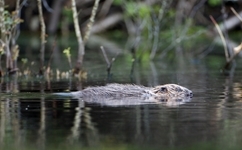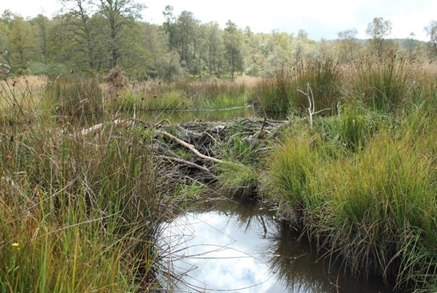 Populations of reintroduced and escaped Eurasian beaver currently exist in England and Scotland and concerns have been raised that beavers, and more specifically the dams that they construct, may negatively impact populations of migratory fish, particularly salmon and trout, due to impeding their movements and fragmenting important habitat.
Populations of reintroduced and escaped Eurasian beaver currently exist in England and Scotland and concerns have been raised that beavers, and more specifically the dams that they construct, may negatively impact populations of migratory fish, particularly salmon and trout, due to impeding their movements and fragmenting important habitat.
There is currently no information available on impacts of beaver dams on the movement of fish in the UK but scientists at the University of Southampton in collaboration with Scottish Natural Heritage, the Game and Wildlife Conservation Trust, and the Salmon and Trout Association aim to close this knowledge gap.
In an article published in New Scientist that reports on a meeting hosted by The Mammal Society and Devon Wildlife Trust in Exeter earlier this month, preliminary findings on the influence of beaver dams on the movements of trout in Scotland are presented.
PhD researcher Robert Needham is currently in the north of Scotland using radio telemetry to assess the distribution and movement of brown trout in a stream that has been dammed by beavers and compare the results with one nearby that has not. The information improves our understanding of how beaver dams provide habitat utilised by trout through the creation of ponds.
Professor Paul Kemp, from the University of Southampton and principal investigator on this project, said: “Beaver and fish interactions are complex. Having tagged and tracked several hundred fish it is clear that beaver ponds create excellent habitat for large trout, with trout being more than twice as abundant in the beaver dammed stream compared with the control.”
However, there can also be negative impacts. “The dams beaver build can block the movements of trout, at least temporarily, when flows are low. But, trout do appear to move past them when water levels rise after the rain,” said Professor Kemp.
Much has been said in the media about beaver impacts – negative and positive – however, this important collaborative research will be the first to shed light on this issue within a UK context.
For more information please contact Paul Kemp - p.kemp@soton.ac.uk
-END-

Photo caption: A beaver dam has unknown impacts on the movements of fish in the UK
Photo credits: Robert Needham.
Notes to editors
The Game & Wildlife Conservation Trust – providing research-led conservation for a thriving countryside. The GWCT is an independent wildlife conservation charity which has carried out scientific research into Britain’s game and wildlife since the 1930s. We advise farmers and landowners on improving wildlife habitats. We employ more than 60 post-doctoral scientists and other research staff with expertise in areas such as birds, insects, mammals, farming, fish and statistics. We undertake our own research as well as projects funded by contract and grant-aid from government and private bodies.
For information, contact:
Eleanor Williams
Telephone: 07592 025476
Email: press@gwct.org.uk